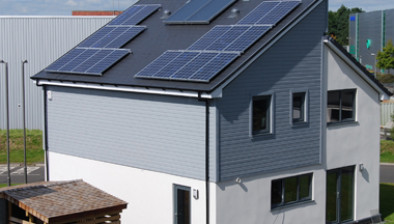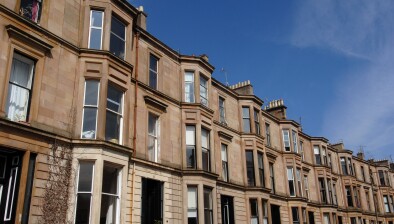Scottish Household Survey reveals continued growth of private rented sector

The proportion of households in Scotland’s private rented sector (PRS) continued to grow last year as the social rented sector remained steady, according to new findings.
The Scottish Household Survey 2016 found that the PRS has increased by an estimated 250,000 households since 1999 to account for 15% of all households last year. The percentage of households in the social rented sector declined from 32% in 1999 to 23% in 2007, an estimated drop of 150,000 households, and has remained at around 23% of all households since then.
Meanwhile the total number of all households in Scotland has increased by 12% from 2.19 million households in 1999 to 2.45 million households in 2016.
The Scottish Household Survey provides robust evidence on the composition, characteristics, attitudes and behaviour of private households and individuals as well as evidence on the physical condition of Scotland’s homes.
The current scale of the survey enables all users to obtain a robust deeper understanding of issues and performance, by being able to analyse across key demographic household characteristics such as deprivation, age, income, gender, rurality, ethnicity and other equalities.
On the make-up of the PRS, the report found that 67% of private rented properties were flats in 2016, while 56% of such properties are flats in the social rented sector. Only 20% of owner-occupied properties are flats in comparison.
 According to the survey, 44% of social rented households would most like to live in an owner-occupier property, while around half (49%) would like to continue to live in a social rented property.
According to the survey, 44% of social rented households would most like to live in an owner-occupier property, while around half (49%) would like to continue to live in a social rented property.
Around 41% of those renting from a private landlord had been at their address for less than a year. In contrast, half of those who own outright had lived at their address for more than 20 years.
A total of 83% of people in Scotland live in urban areas, while only 17% live in rural areas. 61% of all households were owner occupied.
More than a third of adults live alone (35%): with 21% living as single adult and 14% as single older households. Only 5% are large families consisting of two adults and three or more children, or three or more adults with one or more children.
Among the report’s other key findings was that increasing numbers of people in Scotland feel they are managing well financially and nine out of ten people rate their neighbourhood as a good place to live.
Findings include:
Deputy First Minister John Swinney welcomed the results and said they would be important in helping national and local government to prioritise the issues that matter most to people.
Mr Swinney said: “This government is determined to shape the kind of Scotland we all seek – an inclusive, fair, prosperous, innovative country which gives everyone the chance to reach their full potential and protects our vital public services.
“The Scottish Household Survey is an important tool in informing that work. We see in the findings that, since 2007, people in Scotland are better off financially, more qualified, more active and more culturally engaged.
“Satisfaction with people who use our public services remains high but we can and must go further. That is why our bold Programme for Government includes major reforms in education, health and justice, new opportunities and important measures to safeguard the environment and improve the quality of housing.
“This is supported by a local government finance settlement which includes an extra £160 million to support investment in local services, as well as a record high health and social care budget.
“Our purpose is clear. We want Scotland to be the best place in the world to bring up children, the best place to grow up and be educated, the best place to live, work, visit invest and do business, the best placed to be cared for in times of sickness, need or vulnerability and the best place to grow old.”








